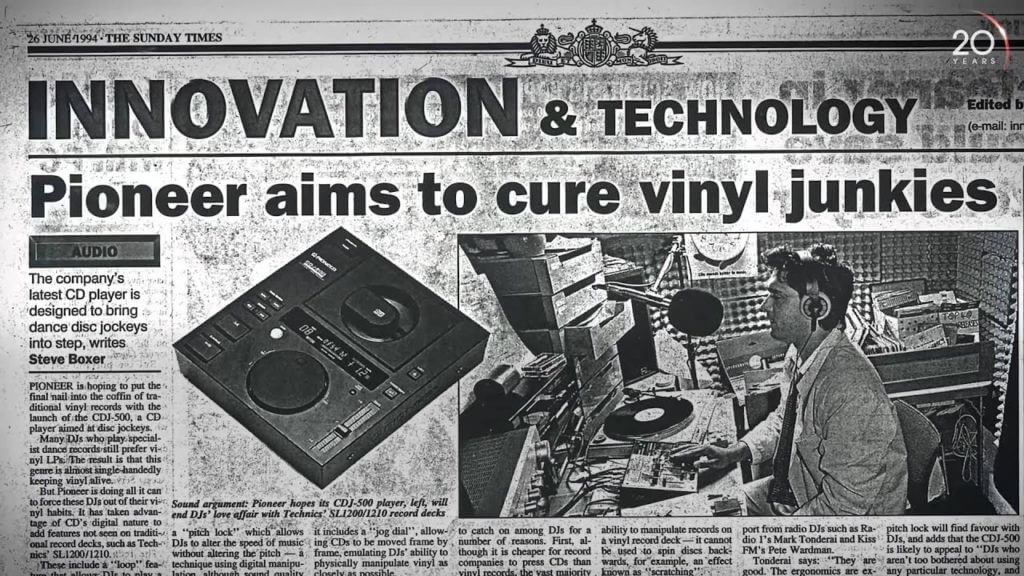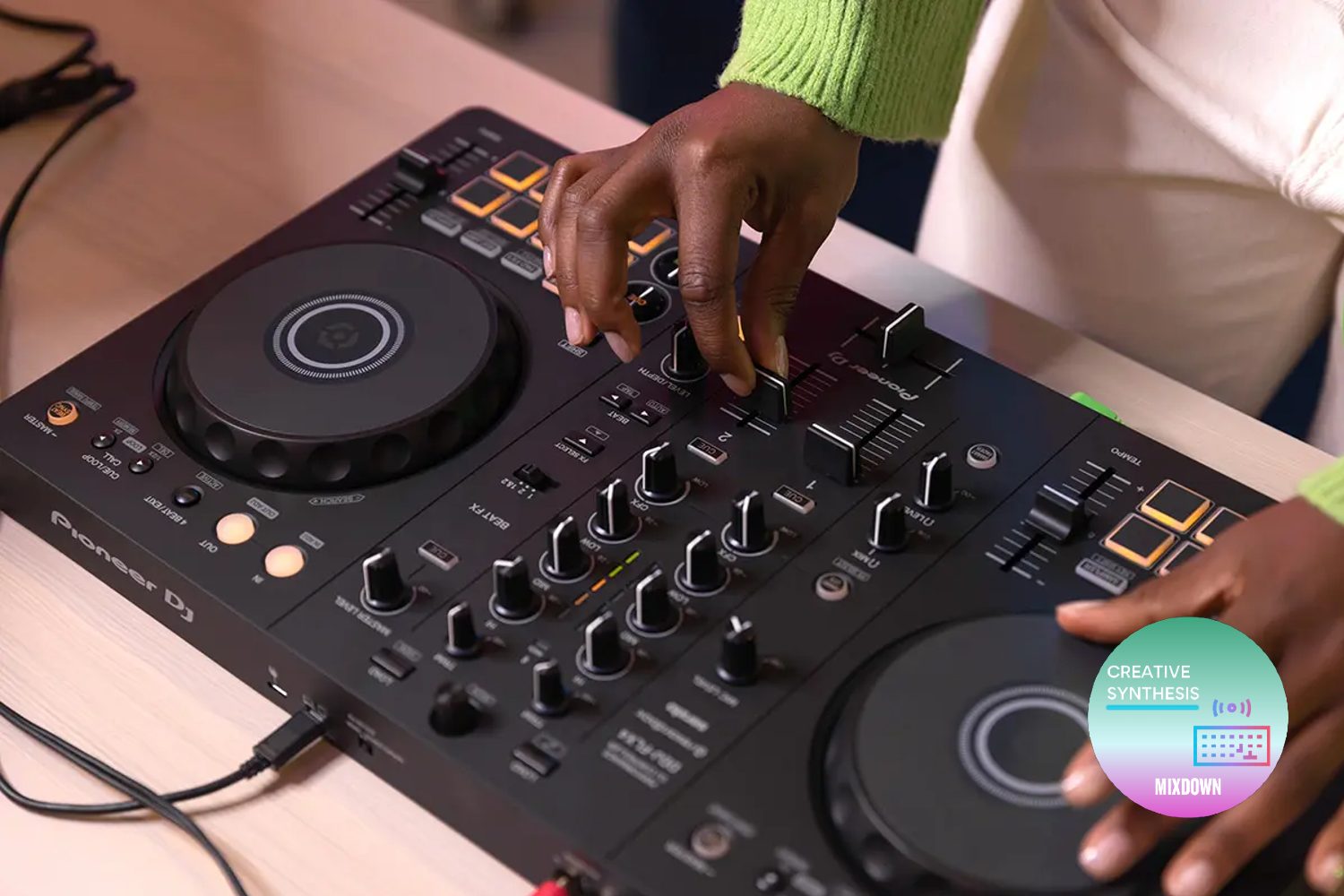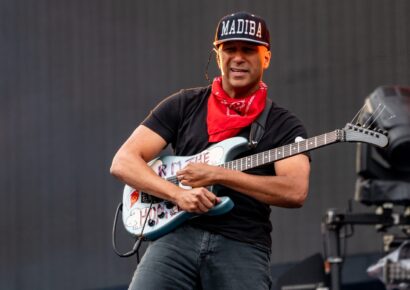From humble beginnings as a speaker repair shop in Japan to ‘pioneering’ the introduction of CDJs and digital DJ-ing, Pioneer DJ has consistently pushed the boundaries of what is possible in DJ technology.
Japan in the 1930s – the first industrialised nation in Asia, with a rapidly growing economy propelled by an embrace of free enterprise capitalism and a natural entrepreneurial spirit, was fast becoming a powerhouse of industry. Enter Nozomu Matsumoto, owner of a radio and speaker repair shop, who in 1938 developed the very first dynamic speaker to be built in Japan from original components. The speaker, known as the A-8, was marketed under the brand name ‘Pioneer’.
Read up on all the latest features and columns here.
That name itself foreshadowed the years to come, wherein the brand would go on to become global industry leaders, with countless innovations; in 1962, Pioneer released the first home stereo system with detachable speakers, revolutionising the way in which consumers experience audio. They were also responsible for the first component car stereo in ‘75, cable television in ‘77, and LaserDisc in ‘79 (a now-hilarious-looking LP-sized precursor to the DVD).
Elsewhere, in the 70s, a pioneer of an entirely different kind was throwing a party. A New York DJ, Kool Herc, had recognised that dancers responded best to the drum breaks in the funk records he was playing, and developed a technique where he would extend the breaks by cutting between two copies of the same record on different turntables. Many would argue that this moment was the genesis of hip-hop; from whence sprang b-boys (or breakdancers) who adored the percussion-heavy breakbeat style, and MCs who’d get on the mic and rap over the sparse beats. Other early adopters like Grandmaster Flash and Grand Wizzard Theodore took the idea and ran with it, developing all sorts of new techniques like scratching and punch phrasing (using the mixer to chop in short musical phrases from another record) that are now commonplace in DJ-ing. Before long, DJ (or ‘turntablist’) competitions sprang up, like the New Music Seminar and Disco Mix Club (DMC), where DJs would go head to head to impress the audience and judges with short routines.
Though CDs had been around since the early 80s, turntablists were still very much attached to the vinyl records on which they’d developed their craft – even in the mid 90s. It was here that the aforementioned Pioneer stepped into the market, creating Pioneer DJ and releasing the world’s first CDJ in 1994 – the CDJ-500, a top-loading CD deck designed for professional DJ use, with a live cue function, looping, master tempo (enabling tempo change whilst preserving original pitch) and a rudimentary jog dial which allowed you to nudge the track back and forth. The DJM-500 mixer, released in 1995, was another instant hit, with its high-quality effects that could sync to the BPM of the track. The CDJ-100s followed in 1998, the first to feature built-in effects – Wah, Jet (flanger) and Zip (record-like tempo control) – controllable via the jog wheel.

Despite their growing popularity, the CDJ was yet to win over purist DJs – there was still a progress vs tradition debate over whether turntablism should solely be about playing records, and the CDJ tech just wasn’t quite up to scratch yet to truly compete with vinyl in terms of reliability and feel. The tables would begin to turn upon the release of the CDJ-1000 in 2001 and its introduction of the revolutionary “Vinyl Mode”. This digital emulation drastically improved the performance of the jog wheel, with the touch-sensitive platter now able to slow down and speed up the track and even perform scratching. In addition, a brand new ‘cue points’ system enabled the DJ to set markers on a track and recall them at the press of a button. Three ‘hot cues’ could even be launched seamlessly without buffering. These new advances in tech coupled with the comparative ease of storing and transporting CDs compared to records soon made the CDJ-1000 ubiquitous in nightclubs worldwide, truly cementing Pioneer’s status as the industry standard.
Major DJ competitions still excluded digital setups for a number of years, until Red Bull started the 3Style comp in 2007. It wasn’t until 2011 that the world’s biggest comp, DMC, finally caved to pressure and allowed digital technology to enter – by this point, most DJs were rehearsing their sets on digital setups before pressing their samples and breaks to custom vinyl records to compete with.
Throughout this period, Pioneer continued to be at the forefront of developments in the field. In 2004, they released the DVJ-x1, the first deck capable of reading DVDs and outputting video – you could now scratch sound and picture. That same year, the DJM-800 mixer was introduced, featuring an equaliser and an improved effects processor, as well as an inbuilt USB interface.
In 2009, Pioneer DJ launched the first version of Rekordbox, a computer-based DJ software controllable by the newly released CDJ-2000. Though initially limited in its feature set, it developed rapidly, with a major update in 2015 allowing DJs to prepare and perform entire sets on a laptop and control it via the newly released XDJ-RX system, which included CD players, a mixer and a digital controller.
2016 saw the release of Pioneer DJ’s next hugely popular piece of gear, the CDJ-2000NXS2, which has effectively been the industry standard since its launch, popping up on most tech riders for major events and clubs the world over. With its solid build, intuitive design and features like a 96khz/24-bit soundcard, 7” touchscreen with QWERTY keyboard, eight hot cues and controller capability, the CDJ-2000NXS2 is capable on pretty much any stage. For biggest festivals and arenas, its big brother, the CDJ-TOUR1, is the gold standard, with an even more rugged build, lower noise floor and distortion levels to accommodate massive amounts of amplification, plus an additional 13” fold-out screen.
Pioneer DJ’s rich history and relentless pursuit of innovation have solidified its role as a driving force in DJ culture. From humble beginnings as a speaker repair shop in Japan to ‘pioneering’ the introduction of CDJs and digital DJ-ing, Pioneer DJ has consistently pushed the boundaries of what is possible in DJ technology. Their groundbreaking products have not only helped to transform the way DJs perform, but have also shaped the entire landscape of music and club culture, and seem set to continue to do so for many years to come.
For more information, head to Pioneer DJ. For local enquiries, visit Jands.







